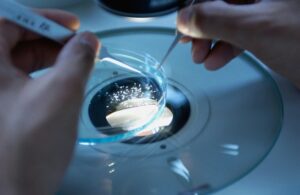
A historic Melbourne factory, once a bustling hub for the production of Volkswagen, Nissan, and Volvo vehicles, has been demolished to pave the way for a cutting-edge data centre. This transformation marks the latest development at the Clayton site, which has already seen the former Holden Special Vehicles (HSV) headquarters meet a similar fate.
The long-defunct car manufacturing plant on Centre Road, Clayton, originally began its operations in 1954, producing the iconic Volkswagen Beetles. This week, the site was cleared to make room for what has been described as a ‘state of the art data centre’. Paul Gekas, Bosch Australia’s business development manager, captured the demolition from Bosch’s nearby headquarters, documenting the end of an era for the automotive landmark.
From Car Manufacturing to Data Innovation
The Centre Road factory holds a significant place in Australia’s automotive history. Initially owned by Martin and Kings Ltd, it was acquired by Volkswagen in 1968. Over the years, the plant expanded its production line to include Datsun (Nissan’s brand name at the time) and Volvo vehicles. Between 1972 and 1988, the factory produced several Volvo models, including the 140, 240, 260, and 740/760 Series.
The plant ceased Volkswagen production in 1977 and was later purchased by Nissan in 1988. However, Nissan halted its local manufacturing operations in 1992, having produced models such as the Pintara sedan and wagon. Despite the end of local vehicle production, Nissan continues to supply parts globally from its nearby Dandenong casting plant.
Demolition of Automotive Heritage
The demolition of the former Volkswagen, Volvo, and Nissan factory is part of a broader transformation of the Clayton Business Park site. The former headquarters of HSV and its motorsport division, the Holden Racing Team (HRT), have also been leveled. Both entities were integral to the Walkinshaw Group, which was established by Tom Walkinshaw in 1987 following the controversial collapse of Peter Brock’s Holden Dealer Team Special Vehicles.
Walkinshaw Automotive remains active in the automotive industry, converting and remanufacturing vehicles such as the Ram 1500/2500, Toyota Tundra, and Chevrolet Silverado to right-hand drive for the Australian market. The company is set to relocate its operations from Clayton South to new premises in Dandenong South by April next year. This move will support their ongoing projects, including the Walkinshaw Andretti United team’s transition from Ford Mustang to Toyota Supra in the Australian Supercars championship by 2026.
Implications for the Future
The shift from automotive manufacturing to data centre development reflects broader economic and technological trends. As industries evolve, the demand for data storage and processing capabilities has surged, prompting the repurposing of industrial sites. The new data centre promises to bring advanced technological infrastructure to the region, supporting the digital economy’s growth.
While the demolition of these historic factories marks the end of an era, it also signifies a new beginning for the site. The transition from car manufacturing to data innovation underscores the dynamic nature of industrial development and the ongoing transformation of Melbourne’s economic landscape.
As the city continues to adapt to changing technological demands, the legacy of its automotive past will remain a poignant reminder of the industry’s impact on Melbourne’s history and culture. The new data centre aims to contribute to the region’s future prosperity, blending historical significance with modern innovation.






